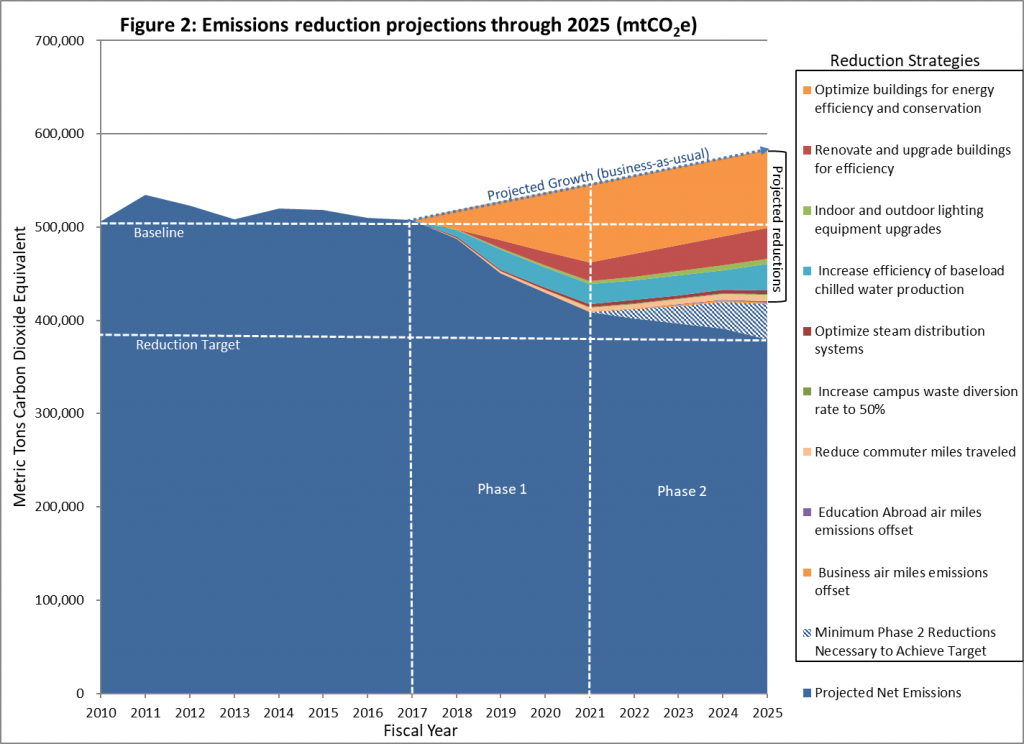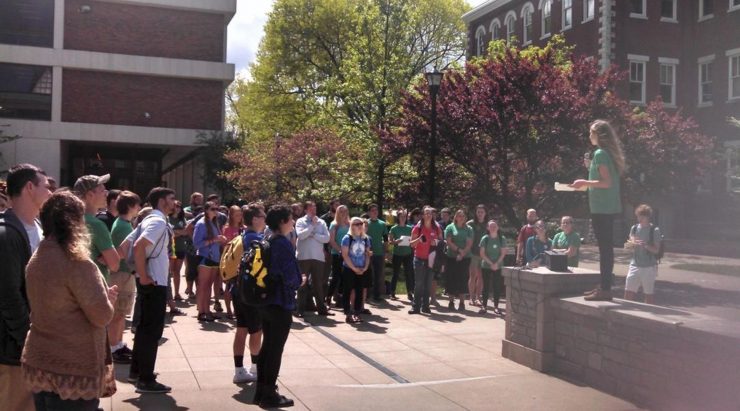In late 2016, President Capilouto’s announcement of the University’s first emissions reduction target concluded one chapter and opened another in the story of climate action on our campus. Students who had provided the energy and the urgency for adopting the target were invited to join a task force of faculty and administrators focused on reducing UK’s greenhouse gas emissions. The task force took on the challenge of charting a course for us to reduce our emissions by 25% before 2025 (compared to a baseline of our total emissions in 2010).
To kick off that process, the task force identified the key activities that contribute to our total emissions. Since most of the university’s activities require energy, emissions come from a lot of sources. After inventorying them all, the task force focused on the top nine contributors to emissions on UK’s core campus in downtown Lexington.
The team identified a suite of energy conservation and efficiency opportunities that would reduce both emissions and costs, focusing on those that required no new funding or offered cost savings for the university. For example, purchased electricity accounts for more than half of campus emissions and is a major expense, so the university will benefit from reducing electricity consumption. And while personal transportation only accounts for 6% of campus emissions, those emissions are affected by the daily decisions we all make about traveling to campus.
These strategies were included in the University’s first Emissions Reduction Plan, which was published in 2016.

This graphic shows the impact these reduction strategies were predicted to have on UK’s emissions. Without taking any steps towards reduction, our emissions were projected to keep rising through the foreseeable future. However, by taking action on our top emissions sources, we knew we would be able to achieve over ⅔ of our reduction goal by 2025. Three strategies alone account for most of that reduction: making buildings more energy efficient, upgrading lighting equipment, and upgrading cooling equipment.
Prior to the COVID-19 pandemic in 2020, we were on track to accomplish our goal of 25% emissions reduction by 2025. In 2018 and 2019, implementing the strategies resulted in significant emissions reductions, and we expected that continuing with those strategies would lead to our goal by 2025. Our emission reduction efforts were given an unexpected boost in 2020, when COVID-19 shut down campus, totally changing our operations and majorly reducing our energy use. The impacts of the pandemic on our operations complicated our efforts to measure progress towards the 2025 goal, but did nothing to dampen our commitment, as we continued to implement emissions reductions strategies throughout 2020 and 2021.
As of Fall 2021, we remain on track to not only achieve our 25% reduction goal, but blow past it by 2025. That success is in part thanks to a second round of emissions reduction planning undertaken by a new task force beginning in 2020.
For more on this latest chapter in UK’s emissions reduction efforts, stay tuned to the WholeSum blog for our next post!

Follow the whole story: Check our our first post on our commitment to climate action!



























